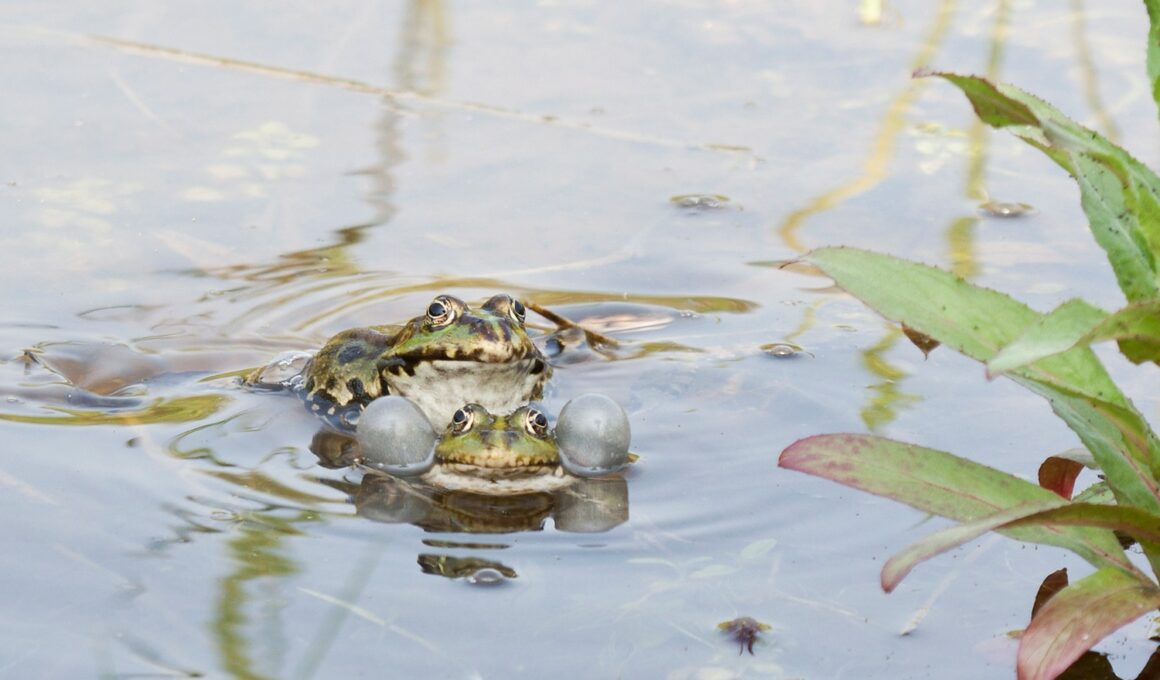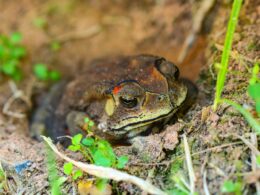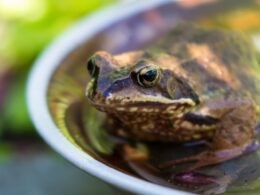In this article Show
Owning pets is a journey filled with unexpected discoveries. As someone who’s nurtured quite a variety of pets and spent countless evenings engrossed in reptile research, I can attest to the wonder that these creatures bring to our lives.
Pacman frogs, with their intriguing appearance and behavior, have recently become a popular pet choice for many.
But one question seems to stand out among potential and new owners: “Are Pacman frogs loud?” It’s an important question, especially if you’re considering sharing your living space with this particular amphibian.
Today, we’ll explore this query in-depth, shedding light on the vocalizations of Pacman frogs and helping you understand what to expect when you bring one into your home. Let’s get started!
Quick Answer
No, Pacman frogs are not consistently loud. While they have a range of vocalizations, including chirping, bellowing, and distress croaks, their calls are typically sporadic and influenced by factors such as age, gender, and environment. Male Pacman frogs may produce louder bellowing calls during mating season, but their sounds are manageable for most pet owners. Proper care and habitat setup can further minimize excessive noise, ensuring a peaceful environment for both the frog and its owner.
The Vocalizations of Pacman Frogs
Pacman frogs, scientifically known as Ceratophrys, have a distinct set of vocalizations that set them apart from other amphibians. These sounds are not just random chirps and croaks; each has a unique purpose, conveying specific messages to other frogs or even to us, their caretakers.
Different Types of Sounds They Produce
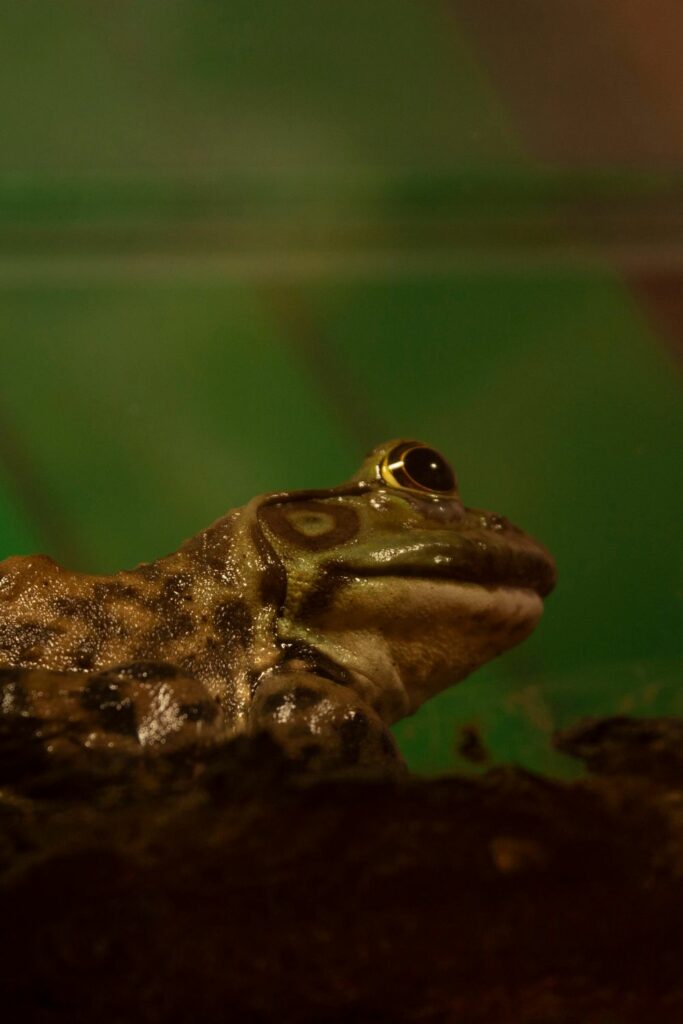
Chirping
This is a softer, rhythmic sound that you might occasionally hear from your Pacman frog. It’s like their version of casual chatter, typically produced when they’re content.
Bellowing Calls
These are the deeper, more resonant sounds that are often associated with frogs. Bellowing is more commonly heard from male Pacman frogs and can be quite loud, especially during the breeding season.
Distress Croak
A sharp, abrupt sound that indicates the frog is feeling threatened or is in discomfort. If you’re hearing this frequently, it might be a sign that something in their environment isn’t right.
Hissing
While not a vocalization in the traditional sense, Pacman frogs can produce a hissing sound by forcing air out of their lungs when they feel threatened. This is more of a defensive sound meant to startle potential predators.
The Purpose of Each Sound
Chirping
This is more of a relaxed and content sound, indicating that the frog is comfortable in its surroundings and doesn’t feel threatened.
Bellowing Calls
Primarily a mating call. Male Pacman frogs use this sound to attract females and establish their territory. If you hear this often, especially during the evenings, it’s a sign your frog might be looking for some company!
Distress Croak
This is an alarm sound. If your Pacman frog is making this noise, it’s essential to check their habitat, temperature, humidity, and other factors to ensure they’re comfortable and safe.
Hissing
A warning to potential threats. While Pacman frogs aren’t aggressive creatures by nature, they will defend themselves if they feel cornered or threatened.
In understanding these sounds and their purposes, you’ll be better equipped to care for your Pacman frog and ensure it leads a happy and stress-free life in your care. Remember, every croak, chirp, or hiss is a window into their world, providing insights into their well-being and emotions.
Factors Influencing the Loudness of Pacman Frogs
Every Pacman frog is unique, and while they have shared characteristics, the volume and frequency of their vocalizations can differ significantly. Several factors play into this variability. Let’s explore these in detail:
1. Age and Size of the Frog
Younger Frogs
Juvenile Pacman frogs are generally quieter than their adult counterparts. Their chirps and croaks are softer, and they vocalize less frequently. As they grow, so does the depth and volume of their sounds.
Size Matters
Larger frogs tend to produce louder and deeper sounds. It’s a combination of having bigger vocal sacs and a more substantial body size, both of which amplify the sounds they make. So, if you have a particularly large Pacman frog, expect some robust vocal performances!
2. Gender Differences in Vocalizations
Male Pacman Frogs
Males are generally louder and more vocal than females, especially during mating season. Their bellowing calls, meant to attract a mate, can be surprisingly loud for such a small creature. This increased volume is their way of marking territory and signaling availability to potential female partners.
Female Pacman Frogs
Females are usually quieter, producing fewer vocalizations than males. However, this doesn’t mean they’re entirely silent. They can and will communicate when necessary, just with less frequency and volume than their male counterparts.
3. Environmental Factors
Temperature
Frogs are ectothermic, meaning their body temperature is influenced by the environment. When it’s warmer, Pacman frogs become more active and are more likely to vocalize. Conversely, during colder periods, they might become more subdued and less vocal.
Humidity
Proper humidity levels are crucial for Pacman frogs. If it’s too dry, they may become stressed, leading to increased vocalizations. Ensuring consistent, appropriate humidity can help keep them comfortable and might reduce unnecessary distress calls.
Environmental Stress
Changes in their environment, such as a sudden light, a new object in their habitat, or even the presence of potential threats, can lead to increased vocalizations. Keeping their surroundings stable and free from stressors is key to maintaining a content, quieter frog.
Being attuned to these factors will not only ensure your Pacman frog’s comfort but will also give you a clearer understanding of their behavior. A content frog is usually a quieter frog, so ensuring their well-being can lead to a more peaceful coexistence in your shared space.
Comparing Pacman Frog Sounds to Other Pet Amphibians
The world of pet amphibians is vast and varied, and so are their vocalizations. Each species has its own unique set of calls, chirps, and croaks. But how do Pacman frogs compare in terms of volume and frequency to other popular amphibian pets? Let’s find out.
How Pacman Frog Calls Stack Up
Pacman Frogs vs. Tree Frogs
Tree frogs, like the popular Green Tree Frog, tend to have a consistent, repetitive chirp, especially during the evenings. While their calls can be melodic, they are usually softer and less varied than the robust bellowing of male Pacman frogs.
Pacman Frogs vs. Fire-bellied Toads
Fire-bellied toads have a distinctive croak, often described as a “chirruping” sound. While their calls can be frequent, especially around mating season, they don’t typically reach the volume of a bellowing Pacman frog.
Pacman Frogs vs. African Clawed Frogs
These fully aquatic frogs have a series of chirping and clicking sounds, and while they can be frequent callers, their volume is generally lower than that of the Pacman frog.
Which Amphibians are the Loudest and Quietest?
Loudest Amphibians
- American Bullfrogs: Recognized for their deep, resonant croaks, they can be heard from distances of up to a mile away during mating season. In terms of volume, they certainly top the list.
- Pacman Frogs: Especially the males during mating season, their bellowing calls can be surprisingly loud for their size, making them one of the louder pet amphibians.
- Spring Peepers: These small frogs have a high-pitched call that can be deafening when a group of them gets going, especially during mating season.
Quietest Amphibians
- Spadefoot Toads: These burrowing toads are relatively quiet, with infrequent, softer calls.
- Newts and Salamanders: While not typically classified as “frogs,” these amphibians are often included in pet discussions. They are mostly silent, making them ideal for those seeking a quieter amphibian companion.
- African Dwarf Frogs: These tiny aquatic frogs have a soft chirp, and while they can be chatty, their calls are generally low in volume.
In conclusion, while Pacman frogs can be vocal and occasionally loud, especially the males, there are certainly louder amphibians in the pet world. However, if absolute silence is what you’re after, looking into newts or salamanders might be the best bet.
But for those who appreciate the occasional serenade and the unique personality that comes with it, Pacman frogs and other vocal amphibians can be delightful companions.
Practical Implications for Pacman Frog Owners
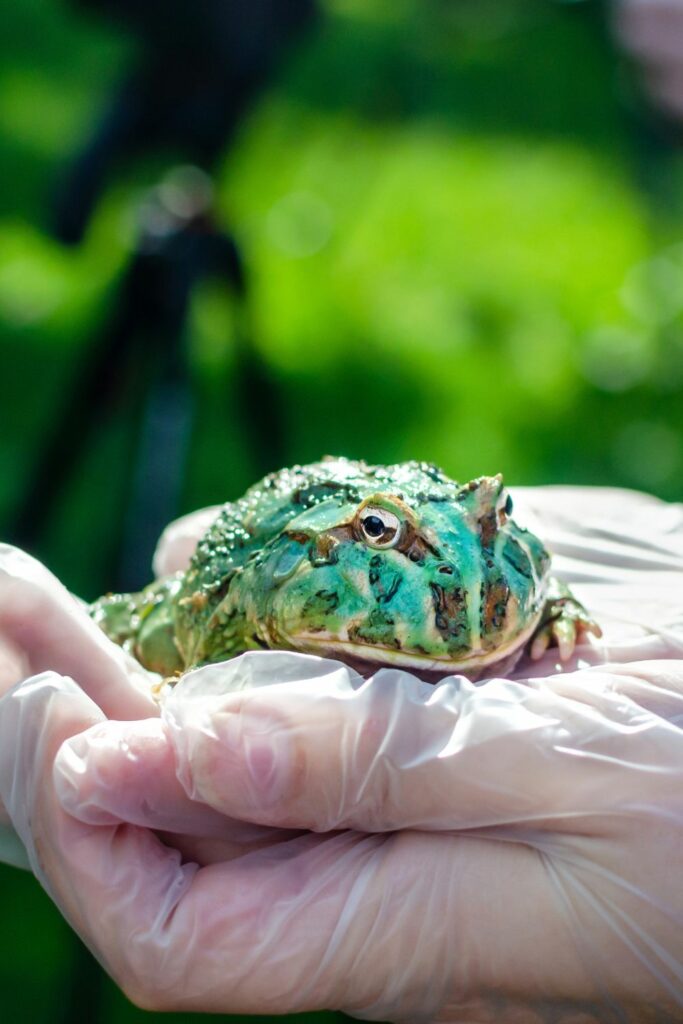
Owning a Pacman frog is a unique experience, filled with both joys and responsibilities. Their vocalizations, while fascinating, can sometimes be a concern, especially if you’re living in shared spaces or have a preference for quiet.
Fortunately, with some careful planning and understanding, you can ensure peaceful coexistence. Here are some practical tips for prospective and current Pacman frog owners:
Setting Up an Ideal Environment to Minimize Excessive Noise
Provide Proper Shelter
Pacman frogs love to burrow. Ensure they have a substrate like coconut coir or sphagnum moss, which allows them to dig in and feel secure. A hidden and comfortable frog is less likely to vocalize out of stress.
Maintain Ideal Temperature and Humidity
Ensure their habitat remains at a consistent temperature (typically between 75-85°F) and high humidity (around 60-80%). Sudden changes can stress them out, leading to increased vocalizations.
Introduce Plants and Hides
Adding live or artificial plants and hideouts in their terrarium can make Pacman frogs feel safer and more at home, reducing stress-induced calls.
Deciding the Best Placement for Their Habitat in Your Home
Away from High Traffic Areas
Position the terrarium in a quieter part of your home, away from frequently used pathways or noisy appliances. This reduces the chances of startling them and triggering defensive hisses or distress calls.
Avoid Direct Sunlight
A location away from direct sunlight ensures the terrarium doesn’t overheat, which can cause discomfort and lead to increased vocalizations.
Consider Sound Dampening
If you find the calls too loud, especially during the night, consider placing the terrarium against a wall that has some form of sound insulation or using a soft barrier like a decorative room divider.
Understanding When and Why Your Pacman Frog Might Be More Vocal
Mating Season Calls
If you own a male, be prepared for increased vocalizations during mating season. This is a natural behavior, and while it can be loud, it’s a sign of a healthy, mature frog.
Identifying Distress Calls
Regular, sharp distress croaks indicate something might be wrong. Regularly check their habitat for any issues and ensure their well-being.
Hunger Calls
While not as common, some Pacman frogs may vocalize when they’re hungry. Monitor their feeding schedule and adjust as needed.
In essence, understanding your Pacman frog’s needs and behaviors can greatly assist in creating an environment where both you and your amphibian friend are happy. A comfortable frog in a well-maintained habitat will not only be quieter but will also live a healthier, longer life.





